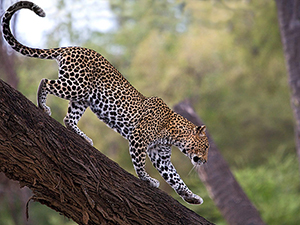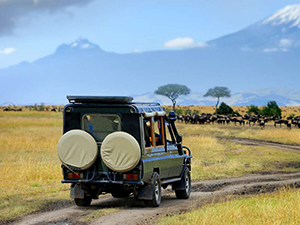Experience the magic of the Great Migration in Masai Mara. Discover the best time to visit, top viewing spots, and expert safari tips for an unforgettable adventure.
A Front-Row Seat to Nature’s Greatest Show
The sun had barely risen when our safari vehicle rumbled to life. A cool breeze carried the scent of fresh grass, and in the distance, the sky glowed with soft hues of gold and pink. It was the perfect morning for a game drive in Masai Mara, and my heart pounded with excitement.
As we drove deeper into the reserve, the landscape unfolded like a scene from a wildlife documentary—endless plains, acacia trees, and a sea of wildebeests stretching to the horizon. Then, in a heartbeat, the calm shattered. A thunderous sound filled the air—the Great Wildebeest Migration was happening right before my eyes.
If you’ve ever dreamed of witnessing one of nature’s most breathtaking spectacles, this guide will show you the best time to visit Masai Mara, the top viewing spots, and essential tips for an unforgettable safari experience.
What is the Great Migration?
The Great Wildebeest Migration is the largest overland migration on Earth, with over two million wildebeests, zebras, and gazelles moving in search of fresh grazing lands. This circular journey spans the Serengeti in Tanzania and the Masai Mara in Kenya, covering nearly 1,800 miles (2,900 km) every year.
But this is no ordinary journey. Along the way, predators lurk in the shadows, ready to pounce. The mighty Mara River crossing is the most dramatic part of the migration, where thousands of wildebeests take a leap of faith, dodging giant crocodiles and strong currents.
It’s a raw, untamed, and unforgettable spectacle—a real-life survival story unfolding before your eyes.
Best Time to See the Great Migration in Masai Mara
While the migration is a year-round event, the most thrilling moments happen when the herds arrive in Masai Mara between July and October.



Pro Tip: If you want to see river crossings, plan your trip for late July to early September. However, nature is unpredictable, and the exact timing depends on rainfall patterns.

Best Viewing Spots for the Migration in Masai Mara
Not all safari locations offer the same experience. To witness the most thrilling migration scenes, head to these prime viewing spots:
1. Mara River – The Heart of the Action
If you’re hoping to see the famous river crossings, the Mara River is where it all happens. Here, thousands of wildebeests gather nervously at the riverbanks before making their deadly plunge. Meanwhile, massive Nile crocodiles wait beneath the surface, ready to strike.


2. Talek River – A Hidden Gem
While the Mara River gets all the attention, the Talek River offers a more secluded and less crowded alternative. Here, smaller crossings occur, giving you a front-row seat without the crowds.


3. Musiara Marsh – Big Cat Territory
If you’re a fan of big cats, Musiara Marsh is the place to be. This area is home to some of Masai Mara’s most famous lion prides, including the legendary Marsh Pride, featured in BBC’s “Big Cat Diary.”



The Wildlife Drama: Predators of the Migration
The Great Migration isn’t just about wildebeests—it’s about life and death on the African plains.




Every moment is unpredictable. One minute, the herds are grazing peacefully. The next, a lioness ambushes her prey, and the chase begins.

How to Plan Your Migration Safari
1. Book Early
Safari lodges and camps near prime migration spots fill up fast, especially in peak season. Book at least 6–12 months in advance to secure the best locations
.
2. Choose the Right Safari Package
There are different ways to experience the migration:



Final Thoughts: Why the Great Migration Should Be on Your Bucket List
Watching the Great Wildebeest Migration is an experience that stays with you forever. The dust, the adrenaline, the thundering hooves—it’s a scene straight out of a wildlife documentary.
If you’re ready to witness one of nature’s greatest wonders, start planning your trip today. Check out our [Safari Travel Tips: What You Need to Know Before You Go], and get ready for the adventure of a lifetime!



